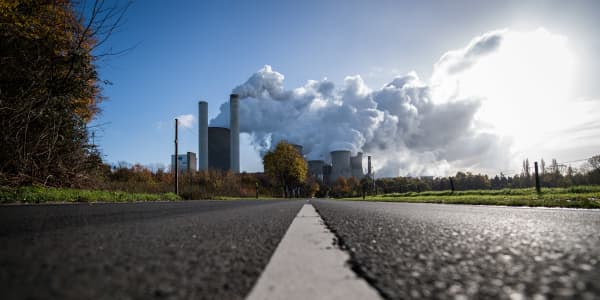
From skyscrapers that soar into the heavens to elegant town houses dating back hundreds of years, the towns and cities we live in are packed with a wide range of buildings.
While they may look aesthetically different, all of these structures share similar traits: they provide shelter from the elements, space to work or rest and, for those lucky enough, lightning fast connectivity.
Buildings — and the industries linked to them — also use large amounts of energy. According to a recent report from the Global Alliance for Buildings and Construction, International Energy Agency and the UN Environment Programme, building construction and operations were responsible for 36% of final energy use worldwide in 2018.
Published in December 2019, the Global Status Report for Buildings and Construction also said that the sector accounted for 39% of energy-related carbon dioxide emissions globally in 2018.
At a recent CNBC-hosted panel centered around the theme of "sustainable resilience," the idea of using connected technologies to improve the performance — and sustainability — of buildings was discussed in some detail.
"The built environment produces a substantial amount of our greenhouse gases, so we know we have a responsibility to do things better, to be more responsible," said Edward Wagoner, chief information officer of JLL Technologies, a division of real estate giant JLL.
Wagoner explained that one way to do this was by leveraging the internet of things, or IOT. "If I can monitor utilization in a building then I can decrease energy consumption," he said.
"If I can use IOT to monitor, for example, water usage – especially where we have some of the water systems shut down right now in offices – then I know which ones have been used and which ones I need to flush to get the potential pathogens out of the system."
The internet of things is a broad term. The European Commission has described it as merging "physical and virtual worlds, creating smart environments."
Breaking it down a bit further, think of devices that are connected to the internet and able to "talk" to one another. An example of this would be a thermostat in your home which can be controlled with a smartphone while you're in the office.
Looking to the future

While today's offices may be home to an array of sensors, monitors and other connected technologies, there are some challenges on the horizon.
As the world adapts to the coronavirus pandemic and its effects on society, many people have started to work remotely.
Earlier on in the panel, the subject of office space and what it could provide aside from a doubling up of costs, given that so many people were now working from home, came up.
JLL Technologies' Wagoner struck an optimistic tone, citing the collaboration of people and attraction of talent.
"People want to be around other people that inspire them, that motivate them, feel like they have a place, that they're creating something," he added.
The panel's moderator, CNBC's Steve Sedgwick, asked whether the occupancy of offices and real estate would ever reach the levels we had before the coronavirus crisis.
"We're in a continual evolution – people will want flexibility when we come back," Wagoner said.
"All of us have talked about people wanting to be in the physical space, so there will be a place for the office," he added, noting that things would be both different and more collaborative.
"Our people are going to want to have better experiences, they're going to want to have choice," he added.
"They're also going to want to know that we are taking their health – and the health of the planet, and the health of the buildings – into account as we come back into these new, reimagined workplaces."




